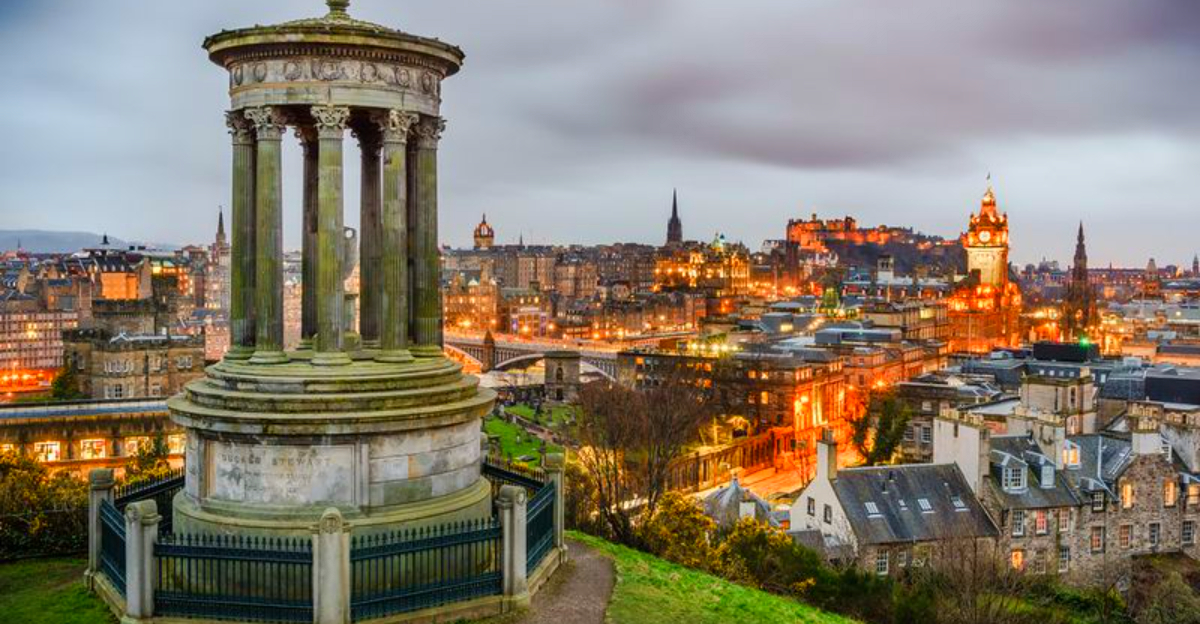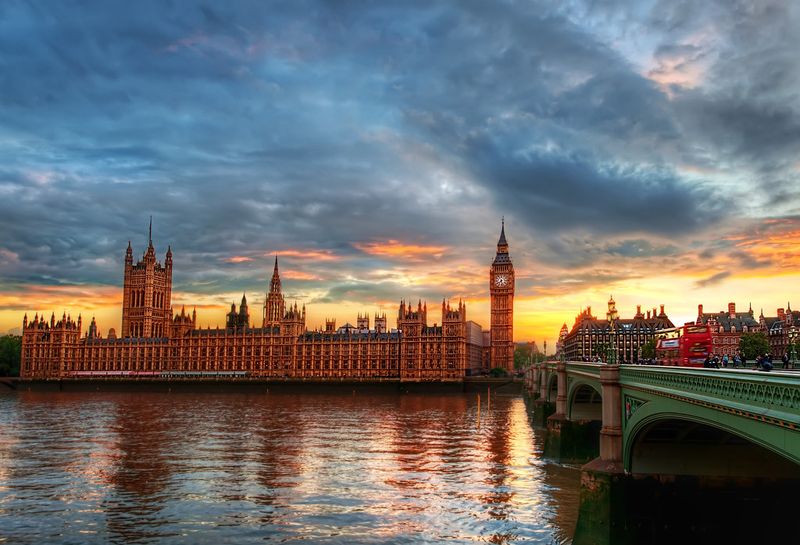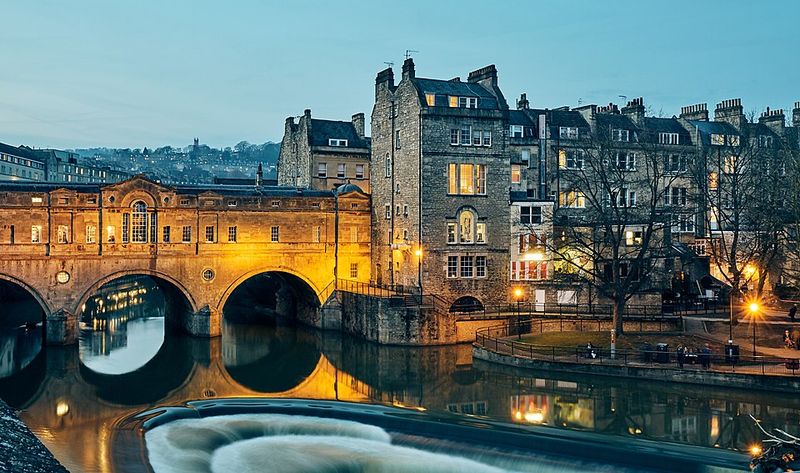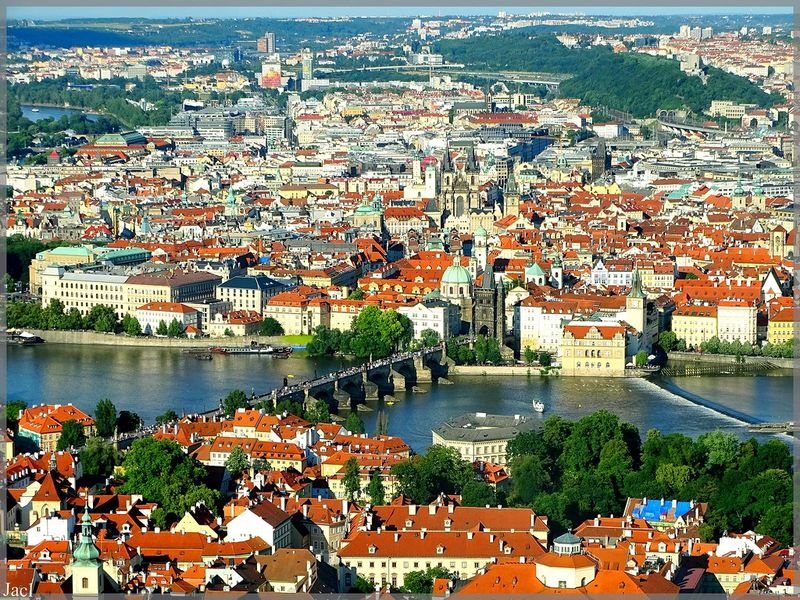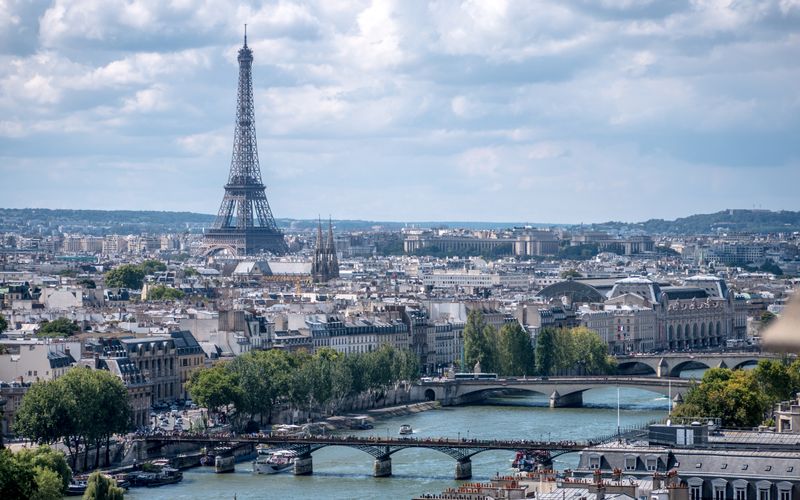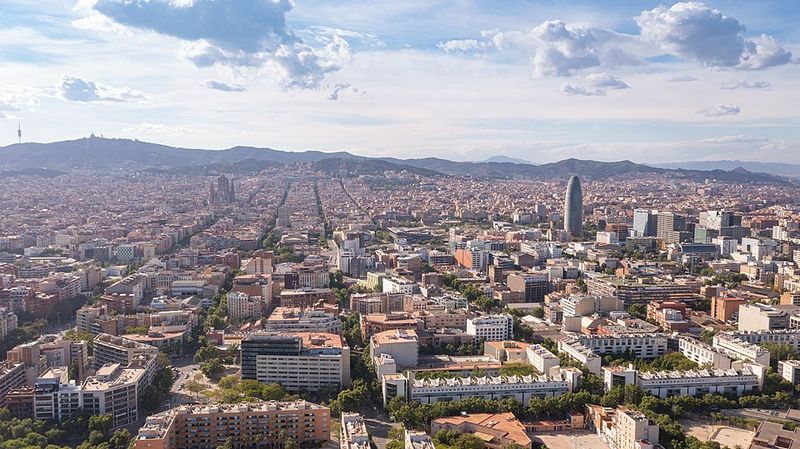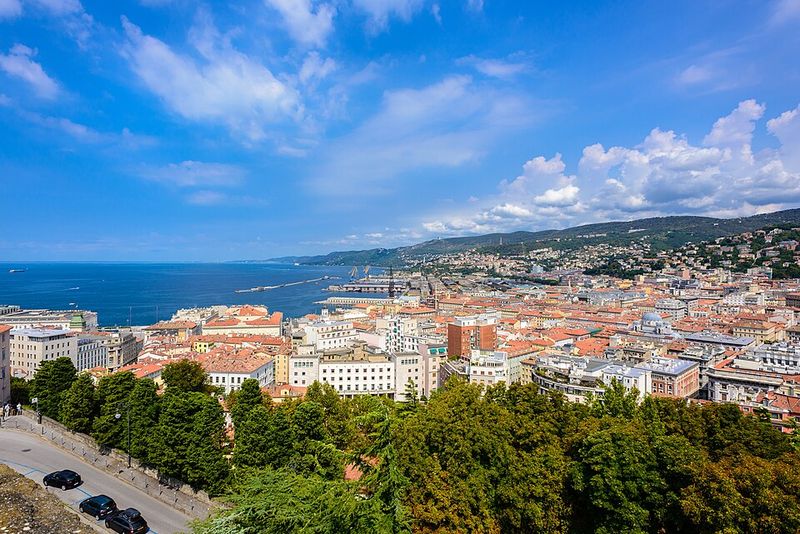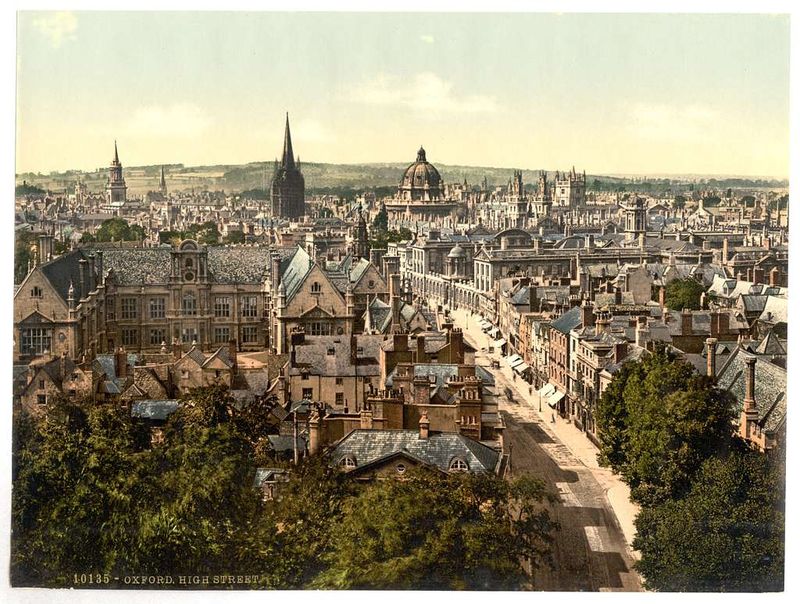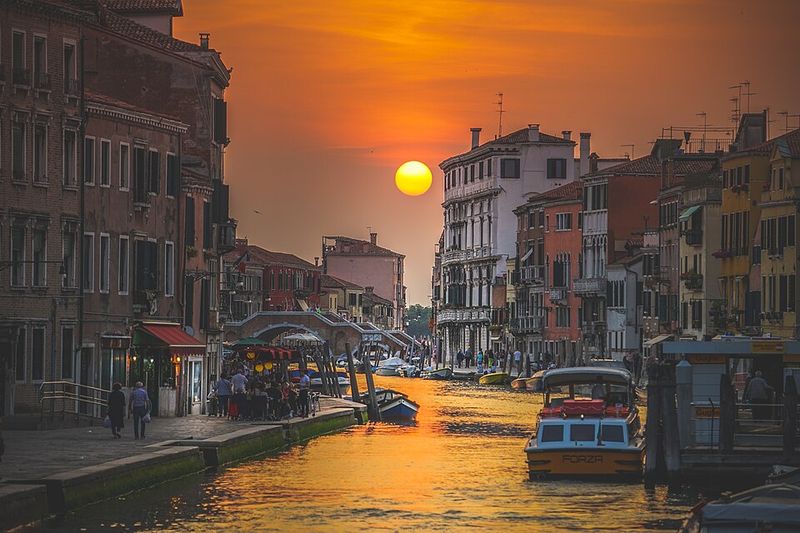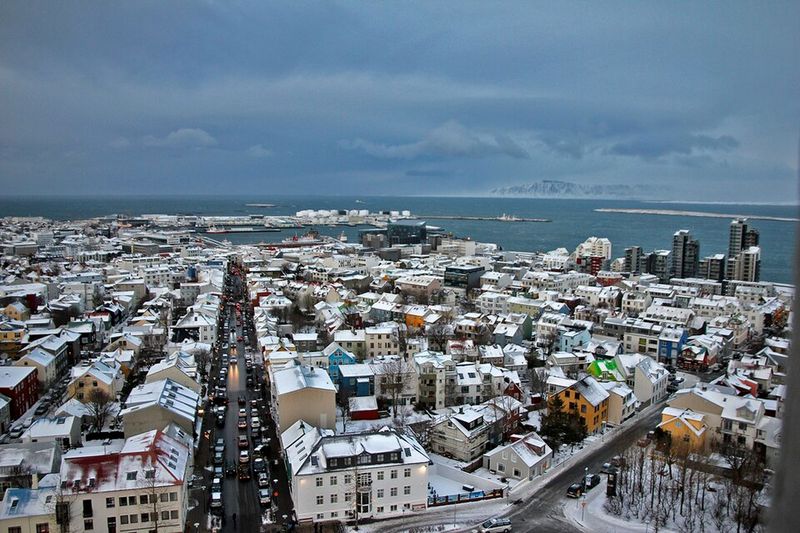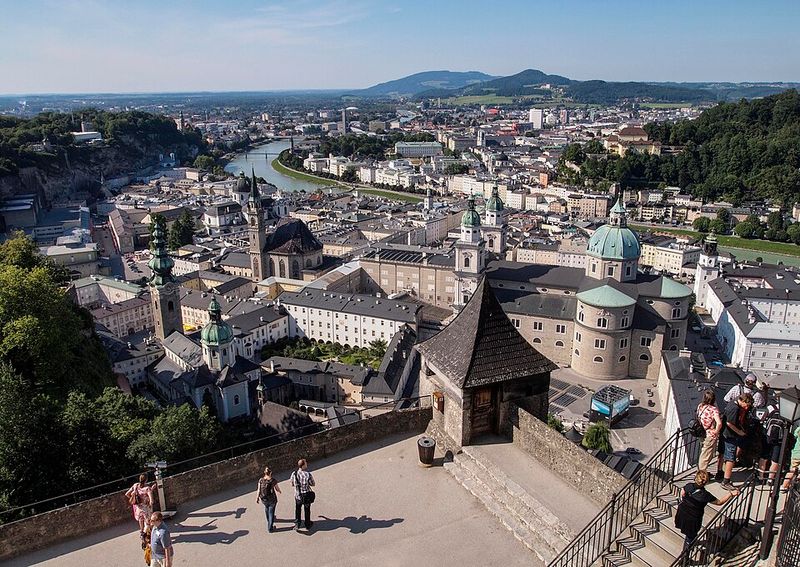Writers have always found magic in certain cities, turning streets and cafés into unforgettable backdrops for their stories. Across Europe, novelists have woven entire worlds around real places, making readers fall in love with cities they might never have visited. From Joyce’s Dublin to Kafka’s Prague, these literary landmarks still draw fans who want to walk the same cobblestones their favorite characters once did. Today, you can trace the footsteps of legendary authors and see the places that sparked their greatest works.
1. Dublin, Ireland: James Joyce’s city
Every year on June 16, thousands of Joyce fans celebrate Bloomsday in Dublin, retracing Leopold Bloom’s journey through Ulysses. The novel captures a single day in 1904, but the city still honors that fictional walk with guided tours and readings.
You can visit real pubs, churches, and streets mentioned in the book, from Davy Byrne’s pub to the Martello Tower. Literary walks offer detailed maps and context for each stop. Dublin breathes Joyce’s spirit, making his modernist masterpiece feel surprisingly accessible and alive for curious readers today.
2. London, England: Dickens’s London
Charles Dickens lived at 48 Doughty Street, where he penned Oliver Twist and other classics. Today, that Georgian townhouse operates as the Charles Dickens Museum, packed with manuscripts, letters, and personal belongings.
The museum runs exhibitions year-round, bringing Dickens’s world to life. Guided Dickensian walks take you through alleys, markets, and riverside haunts that inspired his gritty, compassionate portraits of Victorian London. Walking these routes, you can almost hear the clatter of horse-drawn carts and the cries of street vendors that filled his pages with unforgettable atmosphere.
3. Bath, England: Jane Austen’s social stage
Between 1801 and 1806, Jane Austen called Bath home, and she set two novels here: Northanger Abbey and Persuasion. The city’s grand terraces, assembly rooms, and pump room became her stage for witty social commentary.
The Jane Austen Centre offers costumes, exhibits, and period details that bring Regency life into focus. Bath celebrated Austen’s 250th anniversary in 2025 with festivals, walks, and special events. Strolling the Royal Crescent or the Circus, you can picture her heroines navigating romance and reputation in these elegant, honey-colored streets.
4. Prague, Czech Republic: Kafka’s haunting home
Franz Kafka spent most of his life in Prague, and the city’s labyrinthine streets and looming castles echo the unease in his stories. The Kafka Museum displays manuscripts, photos, and first editions, immersing visitors in his claustrophobic imagination.
In 2024, Prague marked the centenary of Kafka’s death with special tours and tributes. You can visit his birthplace, his schools, and memorials scattered across the Old Town. Walking through Prague’s shadowy alleys, it’s easy to feel the weight of bureaucracy and alienation that fueled The Trial and The Castle.
5. St. Petersburg, Russia: Dostoevsky’s Petersburg
Fyodor Dostoevsky’s apartment is now a museum where you can see his desk, books, and family photos. His novels, especially Crime and Punishment and The Idiot, map the city’s streets, bridges, and courtyards with eerie precision.
Walking through St. Petersburg, you can trace Raskolnikov’s feverish route or stand on the very corners Dostoevsky described. The city’s grandeur and grime coexist, just as they do in his psychological dramas. For fans, every alley and canal carries echoes of moral struggle and redemption that define his greatest works.
6. Paris, France: Hemingway’s moveable feast
Ernest Hemingway arrived in Paris in the 1920s and found a city buzzing with artists, writers, and jazz. His memoir A Moveable Feast captures that golden age, name-checking cafés, bookshops, and the Rue Mouffetard market.
Self-guided literary walks let you sip coffee at Les Deux Magots or browse Shakespeare and Company, just as Hemingway did. The Left Bank still hums with creative energy. Tracing his footsteps, you can taste the bohemian freedom and hunger for art that shaped his spare, powerful prose and launched modern American literature.
7. Barcelona, Spain: Carlos Ruiz Zafón’s labyrinth
Carlos Ruiz Zafón’s The Shadow of the Wind transforms Barcelona’s Gothic Quarter into a character brimming with secrets and shadows. Fans flock to Els 4 Gats café, Santa Maria del Mar basilica, and hidden plazas mentioned in the novel.
Themed walking tours guide you through the labyrinthine alleys where Daniel Sempere chased mysteries and love. The city’s mix of Gothic spires, modernist flourishes, and narrow lanes creates an atmosphere both romantic and haunting. Reading Zafón, you can almost smell the old paper and ink that fill the Cemetery of Forgotten Books.
8. Edinburgh, Scotland: a UNESCO City of Literature
Edinburgh earned the title of UNESCO City of Literature in 2004, the first city ever to receive that honor. It’s the birthplace of legends like Sir Walter Scott, Robert Louis Stevenson, and Robert Burns, all celebrated at the Writers’ Museum.
Every August, the Edinburgh International Book Festival draws authors and readers from around the globe. The city’s cobbled closes, towering castle, and misty hills inspired tales of adventure, poetry, and gothic thrill. Walking the Royal Mile, you can feel centuries of storytelling woven into every stone and wynd.
9. Trieste, Italy: Joyce & Svevo’s friendship city
James Joyce spent over a decade in Trieste, teaching English and writing much of Ulysses. Here he befriended Italo Svevo, a local businessman and novelist whose modernist novel Zeno’s Conscience Joyce championed.
The Museo Sveviano preserves manuscripts, letters, and artifacts documenting their collaboration and friendship. Trieste’s multilingual, cosmopolitan vibe nurtured both writers’ experiments with language and psychology. Visiting today, you can explore archives and cafés where two literary giants exchanged ideas, forever linking this Adriatic port to the birth of modernist fiction.
10. Lisbon, Portugal: Pessoa & Saramago’s capitals
Lisbon celebrates two literary giants: Fernando Pessoa and José Saramago. Casa Fernando Pessoa, the poet’s last home, is now a museum filled with his books, manuscripts, and the heteronyms that made him famous.
Across town, Casa dos Bicos houses the José Saramago Foundation, showcasing the Nobel laureate’s life and novels. Both sites offer seasonal hours, so check ahead. Wandering Lisbon’s hills and alleys, you encounter the melancholy and magic that infuse Pessoa’s poetry and Saramago’s sweeping, philosophical storytelling.
11. Naples, Italy: Elena Ferrante’s neighborhoods
Elena Ferrante’s Neapolitan Novels turned working-class Naples into a global literary phenomenon. Readers hunt for Rione Luzzatti, Chiaia, and other locales that shaped the friendship and rivalry between Elena and Lila in My Brilliant Friend.
Guided walks and official city routes help fans navigate the dense, vibrant neighborhoods described in the quartet. Naples pulses with the same passion, chaos, and beauty Ferrante captures. Exploring these streets, you can feel the weight of family, history, and ambition that drives her unforgettable characters.
12. Oxford, England: Tolkien & Lewis’s Oxford
J.R.R. Tolkien and C.S. Lewis both taught at Oxford, and the Bodleian Library holds treasures from Middle-earth and Narnia. Rotating exhibitions let fans glimpse manuscripts, maps, and drafts of The Lord of the Rings and The Chronicles of Narnia.
The Inklings met at The Eagle and Child pub, which closed but has been approved for restoration and reopening. Oxford’s dreaming spires and ancient quads nurtured some of the 20th century’s most beloved fantasy worlds. Strolling these streets, you can imagine hobbits and talking lions born over pints and late-night debates.
13. Zürich, Switzerland: Joyce’s final chapter
James Joyce spent his last years in Zürich, fleeing World War II and finishing his experimental masterpiece Finnegans Wake. He’s buried at Friedhof Fluntern, where fans leave flowers and notes at his grave.
The Zurich James Joyce Foundation hosts events, readings, and resources for scholars and enthusiasts. Though Joyce is most famous for Dublin, Zürich gave him refuge and a place to complete his literary journey. Visiting his resting place, you can pay tribute to a writer who changed literature forever, far from his beloved Ireland.
14. Venice, Italy: Thomas Mann’s dream city
Thomas Mann’s novella Death in Venice immortalized the Lido, where the aging writer Gustav von Aschenbach succumbs to obsession and beauty. Mann stayed at the Grand Hôtel des Bains in 1911, and the building later became the film’s iconic location.
Today, the hotel remains closed, awaiting redevelopment, but the setting still draws literary pilgrims. Venice’s shimmering canals, crumbling palaces, and languid summer heat create the perfect stage for Mann’s meditation on art, desire, and death. Walking the Lido, you can feel the same haunting elegance that captivated readers a century ago.
15. Berlin, Germany: Isherwood’s Weimar gaze
Christopher Isherwood’s Berlin Stories captured the decadent, doomed atmosphere of Weimar Berlin in the early 1930s. His tales of cabaret singers and struggling artists became the basis for the musical and film Cabaret.
Plaques and addresses, including Nollendorfstraße 17, mark where Isherwood lived and observed the city’s slide toward Nazism. Berlin has rebuilt and transformed, but traces of that era remain. Exploring these neighborhoods, you can imagine the electric nightlife and political tension that Isherwood chronicled with wit and compassion.
16. Reykjavík (Mosfellsbær), Iceland: Halldór Laxness’s home ground
Halldór Laxness, Iceland’s Nobel Prize-winning novelist, lived at Gljúfrasteinn, a house now preserved as a museum. Visitors can tour his study, library, and the surrounding grounds that inspired novels like Independent People.
Laxness captured Iceland’s harsh beauty and resilient spirit in his epic sagas of farmers, dreamers, and rebels. The museum offers a glimpse into his creative process and the rugged landscape that shaped his vision. Standing on his land, you can understand how Iceland’s volcanoes, glaciers, and isolation fueled some of the 20th century’s most powerful storytelling.
17. Salzburg, Austria: Stefan Zweig’s refuge (and loss)
Stefan Zweig lived in Salzburg from 1919 to 1934, a period of intense creativity before he fled the rise of fascism. The Stefan Zweig Centre hosts exhibitions and talks exploring his humanism, biography, and fiction.
His former Salzburg house remains a topic of heritage debate, symbolizing both refuge and loss. Zweig’s elegant prose and psychological insight made him one of Europe’s most beloved writers before exile and tragedy ended his life. Visiting Salzburg, you can trace the footsteps of a writer who embodied the cosmopolitan spirit of pre-war Europe.
